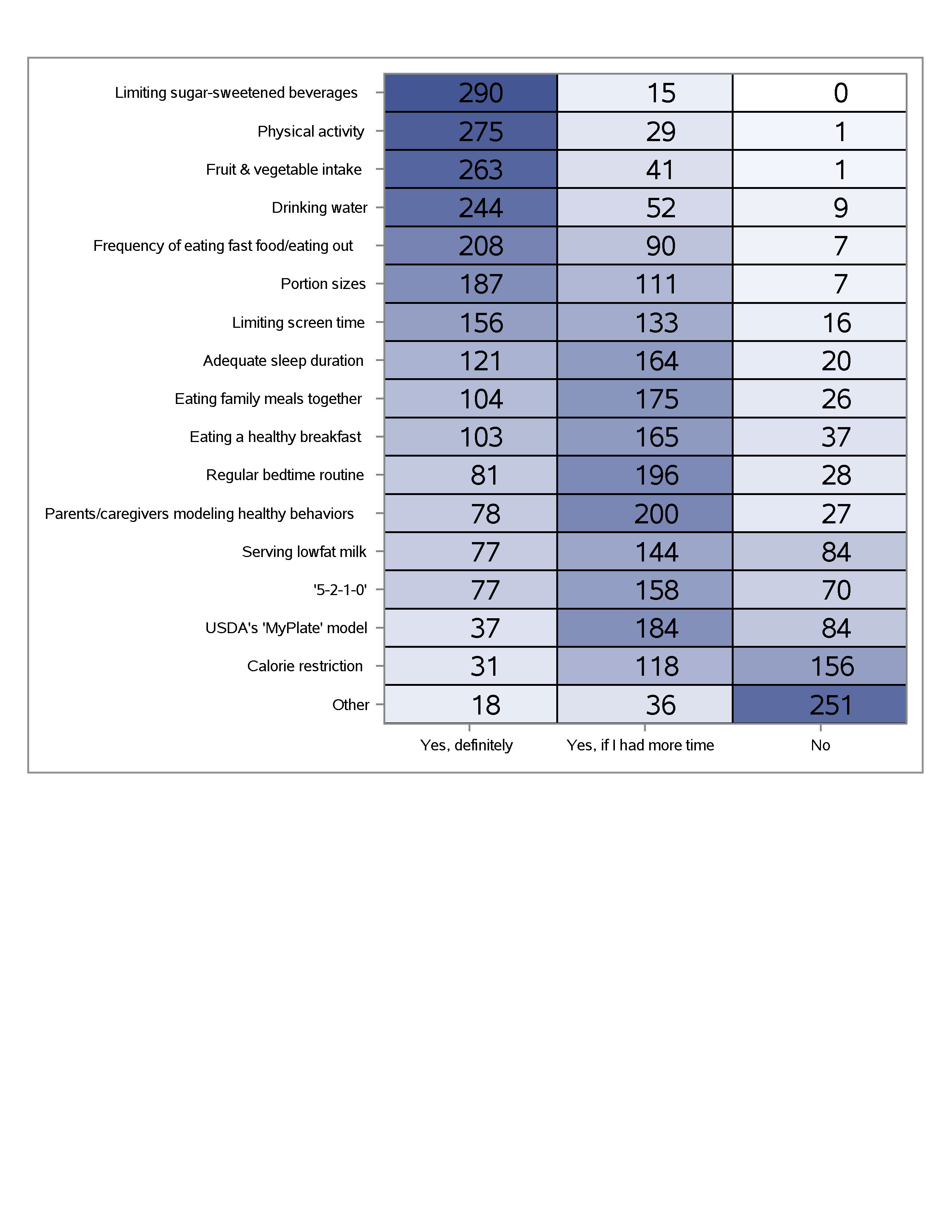Obesity
Obesity 2
401 - Obesity-related attitudes and practice among pediatric primary care clinicians
Publication Number: 401.146

Mona Sharifi, MD, MPH (she/her/hers)
Associate Professor of Pediatrics and of Public Health
Yale School of Medicine
New Haven, Connecticut, United States
Presenting Author(s)
Background: Overweight/obesity (OW/OB) prevalence is rising, and disparities are widening. Primary care clinicians (PCCs) play a key role in OW/OB care, yet evidence-based practice is inconsistent.
Objective: To describe OW/OB-related attitudes and practice among PCCs in diverse primary care practices.
Design/Methods: From September-December 2022, we invited PCCs at 79 clinics affiliated with 3 US health systems in the Northeast, Midwest, and South to complete an online survey to assess PCCs’ demographics, attitudes, practice, and self-efficacy in providing primary care for 2-to-18-year-olds with BMI≥85th percentile. We used descriptive analyses to summarize responses.
Results:
A total of 305 PCCs completed the survey (32.5% response rate, 74.4% identified as female, 63.3% non-Hispanic white, 29.5% residents/fellows, 40.0% in practice 10+ years). Nearly all (92.8%) PCCs agreed (response: agree or strongly agree) that obesity is a chronic disease, but more than half (54.4%) reported worry they will shame/stigmatize children/families by talking about weight. Two-thirds (67.9%) reported confidence in their ability to use brief motivational interviewing techniques with patients/families, yet only 36.7% reported often/almost always assessing patient/families’ confidence that they can change behaviors. Few (18.7%) reported adequate staff support for OW/OB management, and most (63.6%) reported lacking local services/resources to which to refer for OW/OB care. When asked to select health behaviors they would discuss if they had only 5 minutes to counsel patients with OW/OB and their families, PCCs selected a mean (SD) of 7.7 (2.6) topics (range, 1-17). Frequently selected topics (Figure) included sugar-sweetened beverages (95.1%), physical activity (90.2%), and fruit and vegetable intake (86.2%). Screen time and sleep duration were selected by 51.2% and 39.7%, respectively. Few selected non-evidence-based topics (e.g., calorie restriction, 10.2%). Only 7.9% reported confidence in discussing pharmacotherapy or surgical options for OW/OB, and fewer (3.6% and 2.0%, respectively) reported often/almost always discussing these options with eligible patients/families.
Conclusion(s):
While PCCs agreed that obesity is a chronic disease and most chose evidence-based topics to counsel with limited time, opportunities exist to improve confidence/skills in supporting behavior change and discussing pharmacotherapy and surgical options. Training and system-level support for PCCs along with policy-level intervention may improve self-efficacy, staff support, referral options, and may reduce concerns for unintended harm in OW/OB care. 
